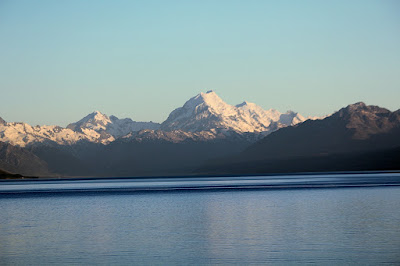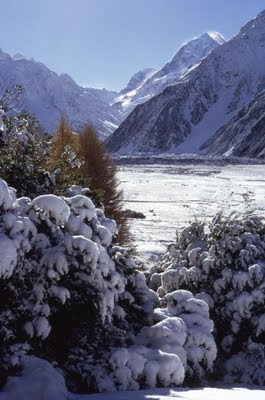HAPPY NEW YEAR
31 December 2011 will draw to a close in 15 hours with New Zealand being the first country in the world to see the New Year in. What a year for me in terms of work, family and mountains it has been. I feel so proud of the work our International Red Cross (IFRC) team has done in Sri Lanka with the SLRCS in finishing off our tsunami work, building houses and communities for people displaced by the war, and providing housing, livelihoods and water sanitation to those affected by floods earlier in the year. The picture below which I took a few days ago symbolises the braids of my my life in our world, which I am constantly twisting, straightening, bending and and prioritsing, and like this once simple river upstream,, our world has become complex and we have to change to survive, and flourish. I hope your New Year will be one of positive change, and that you develope stronging coping mechanisms to deal with the extra pressure place by climate change, economic recession, employment uncertainty and increasing conflict over scarce resources. May God give you the strength to carry through on your New Year's resolutions.,
Let you hair down tonight and celebrate your acievements. Happy New Year.
Shortly after we took off from Lake Tekapo and at the far end of the lake, we flew up the Godler ricer which is glacial-fed, braided and incredib;le colourful. Photo: Bob McKerrow.
On the mountain front this year, I added a new mountain range to the long list I have walked in over the years, the Elburz mountains in Iran. In July i made a quick trip back to New Zealand to see the heaily snow-capped Southern Alps, and the last week I have been basking in the sun at the foothills of our magnificent NZ mountains. and visited Mount Cook and flew over the Godley, Murchison, Tasman, Whataroa, Butler Franz Josef and Maccaulay valleys and their mountains. Here are some photos of this trip to a remote part of New Zealand.
Peaks at the headwaters of the Godley valley.
Mt. Sibbald on the eastern side of the Godley valley
Tom the pilot with Air Safaris in Tekapo with Ablai my son. Bob McKerrow
The Sibbald range in the Godley valley. Photo: Bob McKerrow
Godley Glacier and the headwaters and beyond. Photo: Bob McKerrow
We flew over the Liebig Range and dropped into the Murchison. Photo: Bob McKerrow
At the headwaters of the Murchison valley looking far afield. Photo: Bob McKerrow
From the head of the Murchison looking towards Elie de Beaumont. Photo: Bob McKerrow
Head of Godley and Murchison valleys. Photo: Bob McKerrow
Head of the Tasman Glacier looking to Aoraki Mt. Cook, Dampier, Tasman and others. Photo: Bob McKerrow
Mt. Darwin at the Tasman saddle end of the Late brun range.Photo: Bob McKerrow
Malte Brun and the cheval ridge slightly left of centre. I first climbed this in December 1967. Photo: Bob McKerrow
Keith McIvor (right) and I left on the summit of Malte Brun almost 44 years to the day when we climbed it. Photo: Jim Cowie
Tasman Saddle Hut ( the orange speck) near the end of the Tasman glacier, a refuge for mountaineers. Photo: Ablai Mckerrow
Elie de Beaumont and to the left of the summit the Maxmillian ridge, first climbed by Ed Hillary, Ed Cotter, Bill Beavan and Earl Riddiford. Photo: Bob McKerrow
Looking from the lip of the upper Franz Josef Glacier into the Spencer Glacier: Photo: Bob McKerrow
From the head of the Tasman Glacier looking towards the Whataroa and peaks at the head of the Butler, Perth and Wanganui Rivers. Anyone recognise the small alpine lake to the centre left of the photo ? I think it is likely to be the small valley to the true right of thesnout of the Whymper Glacier. Photo: Bob McKerrow

Twenty- one years earlier with 6th and 7th form pupils from Westland High on the summit of St. Mildred overlooking the Franz neve. This was sponsored by the Charlie Douglas young explorers scheme. Photo: Bob McKerrow
Taking young people into the mountains has been one of the greatest joys of my life and two days back, I took Mahdi, my 8 year old son, to the top of his first peak, Mt. Roy. Here he is celebrating below.
Happy New Year to you all.
Bob McKerrow
31 December 2011 will draw to a close in 15 hours with New Zealand being the first country in the world to see the New Year in. What a year for me in terms of work, family and mountains it has been. I feel so proud of the work our International Red Cross (IFRC) team has done in Sri Lanka with the SLRCS in finishing off our tsunami work, building houses and communities for people displaced by the war, and providing housing, livelihoods and water sanitation to those affected by floods earlier in the year. The picture below which I took a few days ago symbolises the braids of my my life in our world, which I am constantly twisting, straightening, bending and and prioritsing, and like this once simple river upstream,, our world has become complex and we have to change to survive, and flourish. I hope your New Year will be one of positive change, and that you develope stronging coping mechanisms to deal with the extra pressure place by climate change, economic recession, employment uncertainty and increasing conflict over scarce resources. May God give you the strength to carry through on your New Year's resolutions.,
Let you hair down tonight and celebrate your acievements. Happy New Year.
Shortly after we took off from Lake Tekapo and at the far end of the lake, we flew up the Godler ricer which is glacial-fed, braided and incredib;le colourful. Photo: Bob McKerrow.
On the mountain front this year, I added a new mountain range to the long list I have walked in over the years, the Elburz mountains in Iran. In July i made a quick trip back to New Zealand to see the heaily snow-capped Southern Alps, and the last week I have been basking in the sun at the foothills of our magnificent NZ mountains. and visited Mount Cook and flew over the Godley, Murchison, Tasman, Whataroa, Butler Franz Josef and Maccaulay valleys and their mountains. Here are some photos of this trip to a remote part of New Zealand.
Peaks at the headwaters of the Godley valley.
Mt. Sibbald on the eastern side of the Godley valley
Tom the pilot with Air Safaris in Tekapo with Ablai my son. Bob McKerrow
The Sibbald range in the Godley valley. Photo: Bob McKerrow
Godley Glacier and the headwaters and beyond. Photo: Bob McKerrow
We flew over the Liebig Range and dropped into the Murchison. Photo: Bob McKerrow
At the headwaters of the Murchison valley looking far afield. Photo: Bob McKerrow
From the head of the Murchison looking towards Elie de Beaumont. Photo: Bob McKerrow
Head of Godley and Murchison valleys. Photo: Bob McKerrow
Head of the Tasman Glacier looking to Aoraki Mt. Cook, Dampier, Tasman and others. Photo: Bob McKerrow
Mt. Darwin at the Tasman saddle end of the Late brun range.Photo: Bob McKerrow
Malte Brun and the cheval ridge slightly left of centre. I first climbed this in December 1967. Photo: Bob McKerrow
Keith McIvor (right) and I left on the summit of Malte Brun almost 44 years to the day when we climbed it. Photo: Jim Cowie
Tasman Saddle Hut ( the orange speck) near the end of the Tasman glacier, a refuge for mountaineers. Photo: Ablai Mckerrow
Elie de Beaumont and to the left of the summit the Maxmillian ridge, first climbed by Ed Hillary, Ed Cotter, Bill Beavan and Earl Riddiford. Photo: Bob McKerrow
Upper Whataroa valley. West Coast, South Island. Photo: Bob McKerrow
From the head of the Tasman Glacier looking towards the Whataroa and peaks at the head of the Butler, Perth and Wanganui Rivers. Anyone recognise the small alpine lake to the centre left of the photo ? I think it is likely to be the small valley to the true right of thesnout of the Whymper Glacier. Photo: Bob McKerrow

St. Mildred Peak at the head of the Franz Josef Glacier, and top end of the Baird Range, looking to Elie de Beaumont. Photo: Bob McKerrow
St. Mildred and Drummond Peaks at the head of the baird Range and at the head of the franz Josef Glacier. I first climbded these peaks on a ski touring trip with Mike browne, Dick Whitley and Mel Lapwood in 1976. When I was living at Franz Josef in 1990-93 running the national park, I climbed these peaks many times and with Bruce White, took a group of students from westland High Scholl to the summit of St. Mildred. see photo below.Photo: Bob McKerrow
Twenty- one years earlier with 6th and 7th form pupils from Westland High on the summit of St. Mildred overlooking the Franz neve. This was sponsored by the Charlie Douglas young explorers scheme. Photo: Bob McKerrow
Taking young people into the mountains has been one of the greatest joys of my life and two days back, I took Mahdi, my 8 year old son, to the top of his first peak, Mt. Roy. Here he is celebrating below.
Happy New Year to you all.
Bob McKerrow
















































